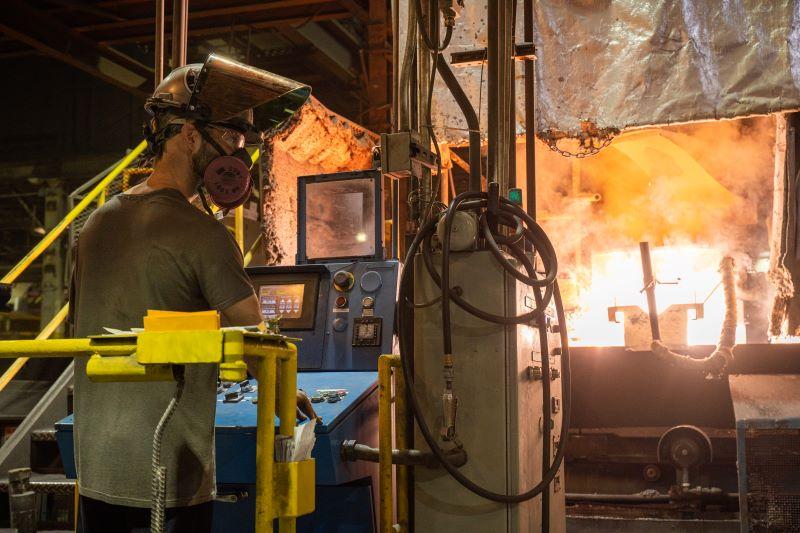Generally speaking, ductile cast iron exhibits a host of desirable properties, most notably tensile strength, yield strength, and ductility (or ability to elongate) — thanks in large part to the presence of spheroidal graphite nodules distributed throughout the material. Of course, there's a lot more to it than that, and that nuance is a byproduct of fine-tuning chemical composition and certain process variables to achieve a very specific mechanical profile.
When it comes to the composition of ductile iron, one of the most prominent variables is temperature. As molten ductile iron cools, iron molecules will arrange themselves in various crystalline microstructures or matrices depending on how it is phased through different temperature ranges. Consequently, this influences how and where our nodular graphite is dispersed throughout the casting, and in turn the resulting physical characteristics.
By applying specialized heat treatments of ductile cast iron, we can dictate which microstructures form (and in what ratios) toward a product ideally suited to its application and end-user.
Types of heat treatments of ductile cast iron
Stress Relief
Stress relief is commonly applied to relieve internal stresses within castings of complex or unusual shapes, particularly those with pronounced variations along a cross-section. The stress relief process begins with heating castings to a temperature between 950 to 1250°F (depending on the composition of the alloy), with the time at temp dependent on the thickness of the cross-section (ASM International recommends one hour plus one hour per inch of section thickness). Thereafter, castings should be uniformly furnace-cooled to 550°F before they are allowed to air-cool.
Annealing
Annealing is a heat treatment of ductile cast iron that enhances machinability, ductility, and impact resistance by softening the metal. Heating, holding, and cooling temperatures and times may vary depending on the specific composition of the alloy, in particular, whether carbides (a class of compounds formed from carbon and one other metallic element) are present.
In ductile iron, excessive carbides can be a detriment, as they lock away carbon that could otherwise be allocated toward graphite nodularization. Some carbide-forming elements (such as chromium) are "clingier" with their carbon than others, which can make a full anneal near impossible.
Normalizing
Normalization intends to obtain a fine pearlite microstructure (alternating layers of ferrite and cementite, aka iron carbide), which imbues the ductile iron casting with additional strength and hardness, but with some loss in ductility and impact resistance. Normalizing temperatures fall within a range of 1600 to 1700°F for ductile cast iron, depending on the silicon content in the alloy. Normalized castings may be air-cooled or cooled with a fan, depending on size and section thickness.
Hardening (quenching and tempering)
Creating the hardness of ductile iron has several phases — first, austenitization by heating to a temperature of between 1550 and 1700°F, immediately followed by quenching, or immersing in a liquid, whether that be water, brine, or oil. Finally, the casting is tempered to alleviate any stresses that may form as a result of quenching by being held under heat, anywhere from 250 on up to 1100°F — the exact temperature and makeup of the alloy will influence phenomena such as nucleation and secondary graphitization, which can be controlled to obtain a specific mechanical profile.
Austempering
When superlative strength, abrasion resistance, and toughness are desired, we can apply a specialized heat treatment called austempering to produce an austempered ductile iron (ADI) casting. It begins much the same way as other hardening treatments — the difference is in the quench, which occurs within a molten salt bath held between 450 and 750°F. This allows the part to cool more evenly, reducing the possibility of the cracks or distortion that happen when part surfaces and interiors cool at different rates. The end product will not be quite as ductile as it was previously, but it will produce the ultimate strength of ductile iron for high-stress assignments.
Ductile castings that meet your needs
As you can see, attaining a ductile iron casting with a prescribed set of properties is a careful balancing act — and it's a tightrope Urick Foundry has skillfully walked for decades. Through our partnership with Applied Process for ADI casting, we can walk an even thinner line toward perfection. We've got everything you want in a casting; you've only got to call!



